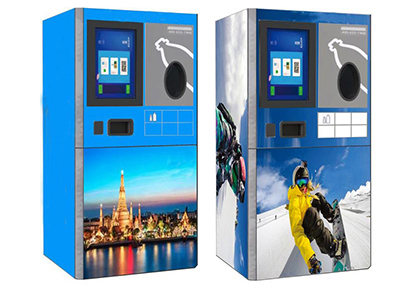Mar. 28, 2022
Reverse vending machines offer an alternative way to recycle bottle containers in an efficient, convenient and motivating manner. This mechanism is easy to manage, easy to place, efficient and resourceful for recycling. Because of its simple process and positive intent to help the environment, reverse vending machines are gaining popularity worldwide.
A Reverse Vending Machine (RVM) is a device that takes out empty and used bottles or cans and then returns money or other forms of incentives to the recycler based on the number of containers recycled. The device was invented by the Swedish company Wicanders in the late 1950s. While it is practical, it is very simple and one-dimensional - accepting only one plastic bottle at a time. This machine could not accept other recycled materials, such as aluminum or glass, nor could it accept large quantities of bottles. To upgrade this equipment, in 1962, engineer Aage Tveitan created an advanced reverse vending machine. The device could then accept bottles made from different recyclable materials and multiple bottles at a time. This upgrade set the stage for how our machines work today.

Plastic bottles and containers at the landfill in Thilafushi, Maldives
Since consumers use more than 1.4 trillion beverage containers worldwide each year, the purpose of the reverse vending machine is to help reduce and recycle this waste. The majority of unrecycled beverage bottles are scattered in landscapes, landfills, oceans and rivers. To combat this waste, RVM offers incentives to recycle. These incentives include cash refunds, charitable donations, subway tickets, paid phone cards or discount tickets to amusement parks, depending on the location of the machine. Thanks to these incentives, users may be more motivated to recycle because it benefits not only the environment, but themselves as well.

Reverse vending machines
Reverse vending machines operate through a series of steps. First, the recycler places the empty beverage container into the receiving hole . Then, the bottle or can is rotated so that a Universal Product Code (UPC) scanner can scan the bottle for the UPC code. This digital code is assigned to each unique trade item to identify its place of manufacture. After the container is scanned and identified, it is processed into a database to track the number of bottles being turned in by the recycler. The beverage containers are then crushed into smaller sizes to have more storage capacity in the reverse vending machine. Recyclers can then choose which rewards they want. Finally, once the storage capacity is full, the
There are several advantages to using reverse vending machines. One benefit is that they help the environment by recycling materials and reducing the need for raw materials to make new beverage containers. rVMs are also conveniently placed in public places such as grocery stores, gas stations, schools, parks, etc., making them easily accessible to users. They are easy to manage because the machine separates recyclable materials (plastic, glass, aluminum) rather than doing it manually. In addition, the RVMs have a capacity of 200 plastic beverage containers and 900 cans, which means these machines can hold a large amount of material before they need to be emptied. While they can hold a lot of recyclable materials, they are not huge machines, so they don't take up much space. In addition, RVMs can benefit businesses. Stores with RVMs can offer store-specific incentives (i.e., coupons) so that customers who enjoy recycling through RVMs will come back regularly to recycle and shop.
Although the primary goal of recycling bins, recycling centers and RVMs is to recycle, each device functions differently. while RVMs only accept beverage containers, bins and centers can accept any recyclable material. rVMs are (mostly) mechanically separated, while bins and centers are manually separated. The problem with manual separation is that material is often separated incorrectly or trash is thrown in with the material. the RVM will only handle clean and empty bottles/cans. However, there is a convenience to manual separation: it is faster to discard material than to wait and process it into the RVM. On the other hand, the RVM and recycling centers are incentivized in a way that the bins are not. Finally, RVMs and recycling bins are located in convenient areas (supermarkets, schools, etc.), but recycling centers are rarely found in towns because they take up a lot of space. Despite the different functions of these three devices, the materials they collect end up in the hands of the same recycling company, so it is worthwhile to examine the benefits of both.
The global market for reverse vending machines is expanding significantly due to the innovation and growth of resource recycling programs. Reverse vending machines are spread across North America, South America, Europe, Asia Pacific, Middle East and Africa . By 2026, the market expects the global market value of reverse vending to increase to $779.3 million - a CAGR of 10.4%. According to Transparency, a market research platform, RVMs dominate the North American market due to steady demand from governments, retailers and the beverage industry. In the Asia-Pacific market, they are expected to expand significantly due to the growth of the food industry.